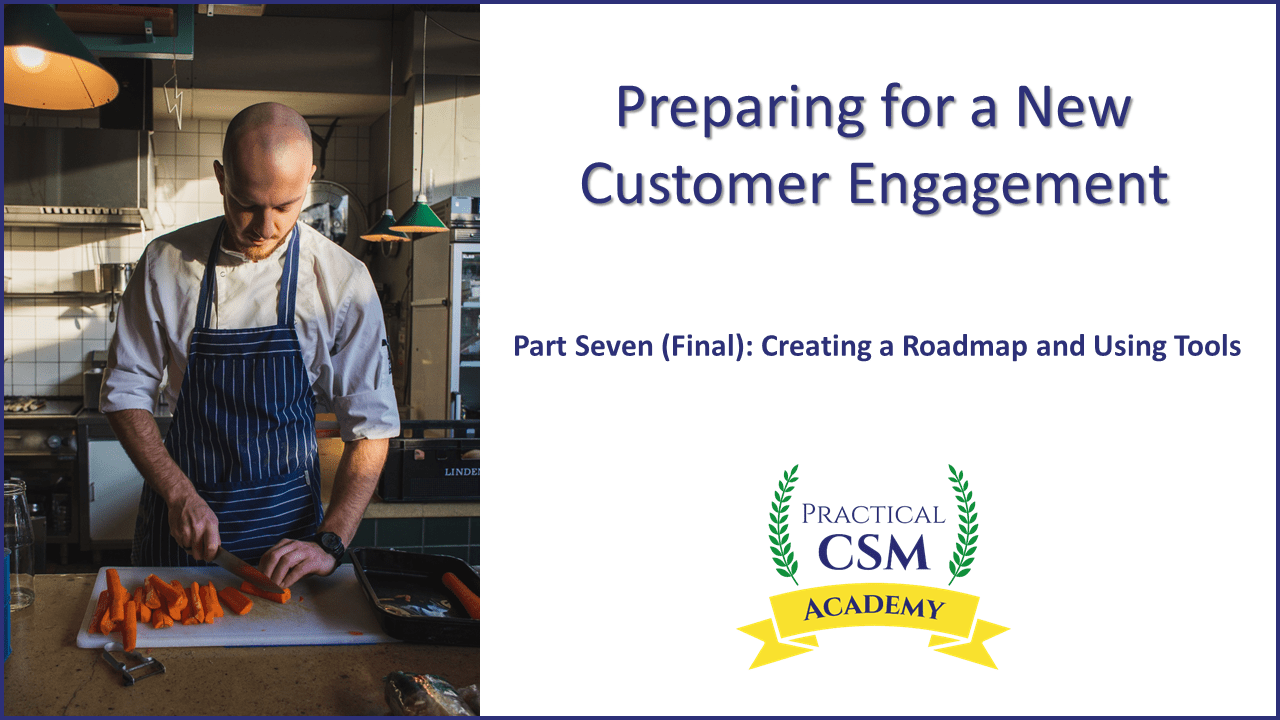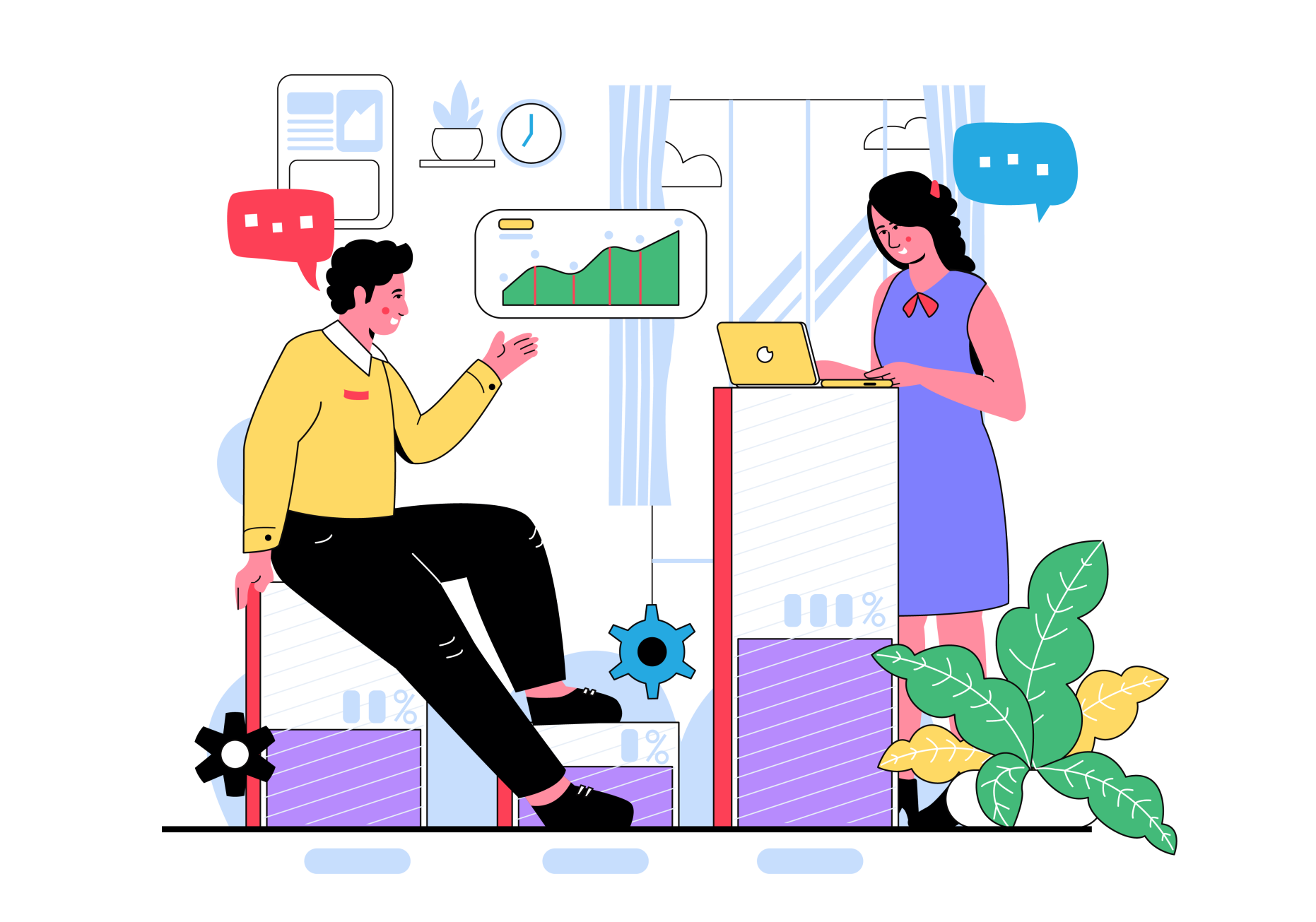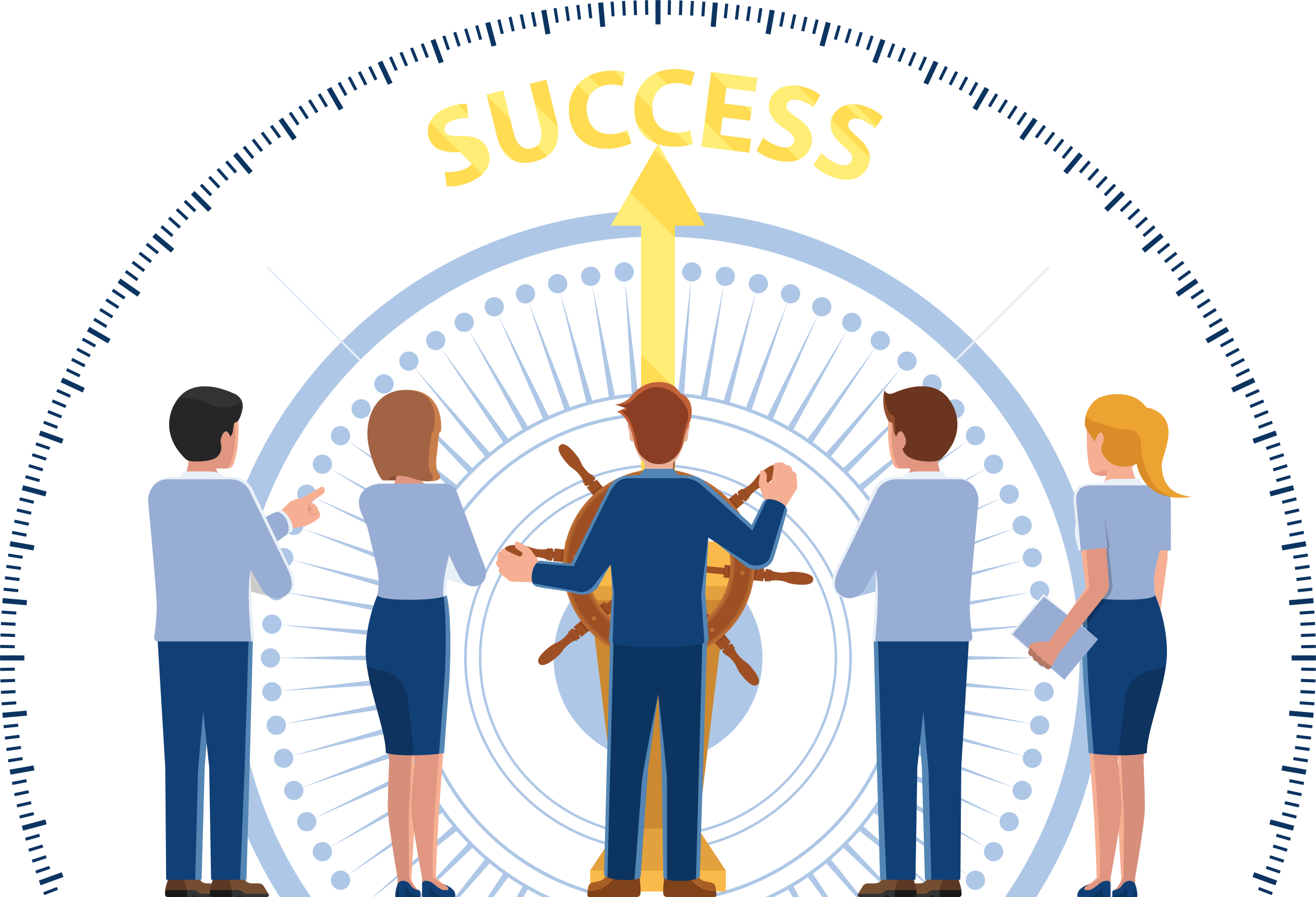Preparing for a New Customer Engagement
Part Seven (Final): Creating a Roadmap and Using Tools
Creating a Roadmap
Roadmap components
A roadmap is simply a high level timeline that makes it easy for both you as the CSM and for others that you share your roadmap with to track engagement progress and the completion of key milestones over time. The concept of a roadmap is that it enables you to break the entire journey into a series of shorter and therefore more manageable segments or phases. This makes the management of the journey more easily since at any one time you need only worry about carrying out the activities of the current phase and preparing for the activities in the upcoming phase.
For each phase of your customer engagement strategy roadmap you should establish its start criteria, activities, methodologies, completion criteria and outputs.
| Item | Description |
| Start Criteria | The start criteria may often be as simple as the completion of the previous phase, however sometimes it may include things like a contract signature, approval from the SPL to move forwards, payment from the customer, or completion of some other work upon which this phase of the journey has a dependency. |
| Activities | Activities are those tasks which must be done in order to be able to state that the phase has been completed to a satisfactory standard. If one or more of the activities will be worked on but not completed in this phase then a note to this effect and where possible explaining criteria to determine sufficient progress has been made within this phase should be provided. |
| Methodologies | As well as defining an activity itself the CSM should also explain the methodology for performing the activity. This doesn’t have to be detailed, but sufficient to remind yourself (or explain to others) how the activity will be done. |
| Completion Criteria | Generally speaking, phase completion occurs when all activities within the phase have been completed, although as stated above sometimes an activity might be commenced in a phase and continued through other phases. The CSM should make a simple note of the criteria for phase completion, sufficient to remind themselves or explain to others. |
| Outputs | A list of outputs should be provided. There may sometimes not be any outputs as such, in which case the output could be described simply as the satisfactory completion of all activities within the phase. Often there will be something more solid than this. It could be as simple as approval from the SPL that a certain task has been completed, but may also involve measurements taken or ratings given to an activity. It might also include a physical output such as a report completed, a meeting held, or a decision reached. |
| External Impactors | Anything from outside of the project or initiative itself that may have an impact on the running of that initiative and therefore needs to be managed within the roadmap. For example no network changes might be allowed during the holiday season, which may lead to a number of weeks where project activity ceases during the summer months. |
Creating a Roadmap
The Purpose of a Roadmap
Just to reiterate that the purpose of the roadmap is not overburden the CSM with more admin and planning, but rather to simplify the task of project management. The recommendation is not to write volumes of information but instead to keep the roadmap as short and simple as possible whilst of course ensuring sufficient information is provided to make sense of it. Again if the customer engagement is very simple (for example if all you are doing for a customer is the onboarding of a relatively straightforward service and there’s no adoption or ongoing value creation work planned for this engagement) the CSM may elect not to bother with completing a roadmap since it is probably not required. It’s up to the CSM to make this decision and also to decide how much or how little time to spend creating the roadmap if they have determined that one is desired.
A good strategy to use when creating the roadmap for a more complex or long term customer engagement is to create the bare bones or skeleton of the entire journey, but just to focus on fleshing out in detail the upcoming phases – perhaps just the next one or two – and to iterate back to complete more detail on future phases as you move forwards through the engagement. This reduces the admin and planning burden at the start and also caters for situations where not all information is known or decided at the beginning about the later stages of work.
The good news is that you will almost certainly find a strong pattern between each customer engagement in terms of activity to be documented in each phase of the engagement. This means that once you have created your first customer engagement strategy roadmap, you can copy and paste much of the information created in it to other roadmaps for future engagements.
Using the roadmap
Once the roadmap is in place, the CSM can use it as a guide to current and upcoming activity and can also share it with colleagues in discussions around work that needs to be completed and with their line manager to show progress and agree any details about how upcoming work should be completed and/or prioritized.
As with the customer engagement strategy itself, the CSM should think carefully before sharing the roadmap with customer stakeholders since it may contain activities or criteria relating to the CSM’s own company’s outcomes (for example getting advocacy, or getting the customer to be more self-reliant or simply ensuring a renewal takes place) as well as to the customer’s outcomes. Of course there’s nothing to stop the CSM from creating a “customer friendly” version for sharing with customer stakeholders if this seems like a good idea.
Tools for Engagement Preparation
Preparation Styles
There are many ways to go about completing your initial preparation for a new customer engagement. These range from the very brief and informal, such as a casual conversation with the account manager and a few notes about what they have purchased through to the very detailed and formal where a corporate handover process is performed and where the CSM then follows up with further research of their own to validate the information gleaned from the handover and expand that information further. What you actually do as a CSM in preparing for a customer engagement will largely be down to your needs in terms of the complexity and importance of the engagement and the time you (and your colleagues) have available. Maybe to some extent your own personal style of working will also impact your preparation. Whatever the case it is down to you as the CSM to make sure that you are prepared sufficiently for the upcoming engagement.
Capturing Research Information
To assist with your engagement preparation work, I have created a Microsoft® Excel™ workbook called the Customer Research Checklist which contains separate worksheets for each of the research areas described in the sections above. If you purchase my book – Practical Customer Success Management – or if you are a member of the Practical CSM Academy then you can download this workbook and either use it as-is or modify it in whatever way you wish in order to make it more specifically suited to your own customer success management needs. This might include adding further information you need to research or removing information you do not require, or modifying names to meet your own company’s naming conventions.
Each worksheet lists the essential information to gather for that aspect of the handover and provides space to record your findings. Of course the worksheet format has its limitations so you may need to be a little creative at times in the way in which you organize and record the information you gather. You might also find that in the process of gathering this essential information you also uncover other useful information. My recommendation is to create additional rows with appropriate headings and record this information alongside the essential information as well, so that everything is in one place.
The worksheets within the workbook have been placed into what I consider to be the most logical order for a handover, however you should feel free to research the information in any order that suits either you or others from whom you are gaining the information. Also you may find that information from other aspects of the engagement gets discussed in the course of discussing one particular topic, and so of course if this occurs the CSM should simply flip between the workbooks to record the relevant information in the right place.
Another point about using the workbook is that sometimes the information you are researching is already in a digital format, or is in some other format that makes it difficult to include in the workbook (for example a flow diagram of the customer’s reporting structure). In these instances you should instead either summarize the information in the workbook and reference the existing information, or simply reference the existing information if a summary is not practical. The reference might be to a location on another system such as your customer success health score system or sales CRM tool, or a file name and location.
Formulating the Customer Engagement Strategy
I have again used Microsoft Excel to create a simple template to help you develop your engagement strategy. The template is in the form of a workbook called Customer Engagement Strategy and as before this can be downloaded if you have either purchased my book or are a member of the Practical CSM Academy. It can either be used just as it is or modified in whatever way you wish in order to make it more specifically suited to your own customer success management needs. This might include adding further information you need to research or removing information you do not require, or modifying names to meet your own company’s naming conventions. The first worksheet within the workbook can be used to document the engagement strategy details.
Creating the Customer Engagement Strategy Roadmap
To create the roadmap use the remaining worksheets within the same Customer Engagement Strategy workbook that you used to formulate the strategy. There is one worksheet for each PCSMF phase for your use. As noted above, you will almost certainly find a strong pattern between each customer engagement in terms of activity to be documented in each phase of the engagement. This means that once you have created your first customer engagement strategy roadmap, you can copy and paste much of the information created in it to other roadmaps for future engagements.
You will see that for each activity within each phase there is a space for a description and another space for notes. Use the description field to describe the activity itself and any resources needed for it. Use the notes field to remind yourself and others about any special concerns or considerations about the activity that you or they need to be aware of, and to note the name of the person who will carry out the activity if that person is not you.
Remember to keep the roadmap up-to-date by adding more details for upcoming phases as these details come into view. Remember also to check off activities and phases by marking them as completed as you go along.
The Central Repository
Once you have started working on the workbook, make sure to save it (or a copy of it) to the Central Repository. The Central Repository is simply a corporate storage location that is appropriate for saving customer-related information to and which anyone who needs access to it can get hold of it when necessary. Other documents that you create can also be added to the Central Repository so that they are available alongside the workbook. How you organize the Central Depository and what (if any) tools for data management you use are of course entirely up to you.
The CSM should consider carefully who does need access to the Central Repository. Certainly the CSM themselves and their colleagues and managers within the Customer Success team require access to it. It might also be useful to consider extending full or limited access to others within the CSM’s own organization such as colleagues in Sales, Service Delivery, R&D, marketing and other functions that may find a use for some of the information which the repository will contain, as may partners such as third party service or product providers. Customer stakeholders may also need access to some of the information contained within the Central Repository. Customer and partner access however does need to be carefully limited to just the relevant information they require.
Essentially, a customer success team needs to develop a proper strategy around information management and information sharing which is beyond the scope of this book to define in more detail than this brief discussion. Please note that CSMs should of course make sure they are aware of any legal and corporate requirements in their region regarding storing corporate or personal data and ensure that they follow these requirements. If necessary take advice from your line manager and/or your legal team.







